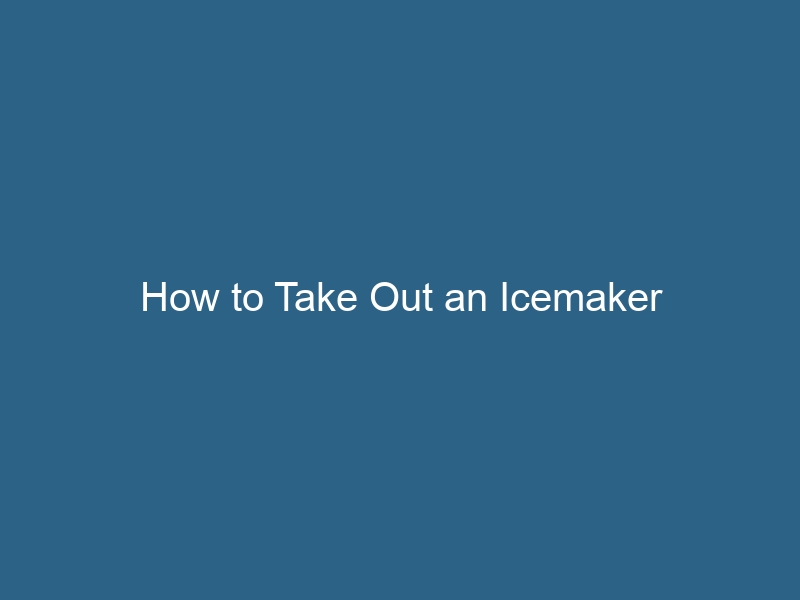Quck answer
To remove an icemaker, follow these steps:
1. Turn off the water supply to the icemaker.
2. Unplug the refrigerator from the power source.
3. Locate the icemaker and remove any screws or brackets securing it in place.
4. Gently pull the icemaker away from the wall of the freezer.
5. Disconnect the electrical and water connections, if applicable.
6. Carefully lift the icemaker out of the freezer.
7. Clean the area where the icemaker was located.
8. Reinstall any screws or brackets that were removed.
9. Reconnect the electrical and water connections, if applicable.
10. Plug the refrigerator back into the power source and turn on the water supply.
Similar to a sunroof in a car, a refrigerator ice maker is an optional feature that some people find necessary while others find it unnecessary. If you belong to the latter group, you may want to utilize the space occupied by the ice maker for additional food storage. Even if you are attached to your ice maker, it is important to know how to remove it in case of any issues that require replacement. While the basic procedure for removing an ice maker is straightforward, it is advisable to consult the manual for your specific refrigerator model before starting.
Preparing for Removal
Most ice makers are add-ons. Instead of being built into the refrigerator, the ice maker is bolted onto a bracket, and if you want to get rid of it, all you need to do is unbolt it. However, there are a couple of important steps to take before doing so:
Step 1: Disconnect the Power
Unplug the refrigerator or, if easier, turn off the breaker in the main electrical panel that controls the outlet where the refrigerator is plugged in.
Step 2: Turn Off the Water
Locate the valve for the water line that supplies the ice maker and turn it off. The valve is often located behind the refrigerator, and you can access it by pulling the refrigerator away from the wall. If you don’t see the valve there, follow the water line until you find it. Be careful when pulling the refrigerator away from the wall to avoid damaging the water line, especially if you plan to install a new ice maker. If you do not intend to replace the ice maker, it is a good idea to disconnect the water line from the refrigerator using a wrench.
Step 3: Remove the Ice Bucket
Take out the ice bucket and empty the ice or use it to make a slushie. Removing the bucket exposes the front panel of the ice maker. You are now ready to start removing it.
Taking Out the Ice Maker
The basic procedure for removing the ice maker is simple: Slide it off the bracket, disconnect the power harness, and lift it out. If you do not plan on replacing it, you should also remove the bracket. The details such as bolt type and location may vary depending on the model. Refer to your manual for these specifics. If you do not have a manual, you can find one on the manufacturer’s website or by searching for the make and model of your refrigerator followed by the word “manual.”
Step 1: Remove the Panel Cover
Attempt to unsnap the cover using your fingers. If this does not work, you may need to pry it open with a flat-head screwdriver. Take off the door and set it aside.
Step 2: Release the Ice Maker
The ice maker is typically secured by tension pins. Press these pins to disengage them, and then slide the ice maker forward along the bracket to expose the wiring harness. On some models, you may need to remove a screw or bolt to release the ice maker.
Step 3: Unplug the Cables
To separate the wire harness, grab the cover and press the locking pin on the side using your finger or a screwdriver. Then, pull the harness apart. Depending on the model, there may be more than one harness to disconnect. Once the harness is disconnected, remove the ice maker from the bracket and set it aside.
Step 4: Take off the Brackets
Using a socket wrench or screwdriver, unscrew the bolts or screws that hold the bracket in place. Remove the bracket. If you do not plan on replacing the brackets, it is a good idea to screw the fasteners back into the holes to prevent open spaces inside the refrigerator or freezer that can gather moisture and mold.


